To wrap a week of writing on the curiosity and cultural significance of the shopping mall, we invited readers to share their mall memories. You wrote enthusiastically from across the Pacific Northwest and Canada. Today we’re thrilled to share your stories.
Our affection for malls goes back generations. In the 1970s the Wonderful Grand Band in St. John’s, Newfoundland and Labrador, had a TV show on CBC. As Tyee reporter and resident Newfoundlander Katie Hyslop recalls, “They did a parody song about the main mall in town, the Avalon Mall. The Avalon still exists, but it no longer has a push organ.”
Watch Hyslop’s step-uncle in action with the Wonderful Grand Band. He’s the guitarist in the blue shirt.
Thanks to everyone who contributed their stories from the mall.
‘My mother took to it like a duck to water’
The opening of Oakridge in about 1957 to ’58 coincided with my family getting a car, and my mother took to it like a duck to water. Haircuts, a bookstore, food shopping of course, and familiar Woodward’s were part of the routine. Plus, my mom didn't have to lug the groceries home on foot from the Kerrisdale shops or the small grocery store at 57th and Arbutus. In that original mall, there were very pleasant little courtyards. I remember them well.
When Oakridge was demolished and replaced by the new, now former one, it seemed to lose a lot of the permeable space it had. Ironically, the grand opening in 1984 coincided with the launch of my first "real" book — Vancouver The Way It Was — at the Woodward’s bookstore.
I wonder what kind of community will coalesce around the new Oakridge?
I could feel my excitement rising
I’ve been totally blind since the age of two, and hard of hearing since late childhood. As a result, the role malls played in my life is quite different from that of sighted people. Window shopping has never been a big part of my life unless I happened to be with someone who had that kind of time.
I think my warmest memories of malls from childhood were the times when I got to visit Santa. There’s just something special about waiting in line with your excitement rising, listening to the chatter and giggles of other kids and their parents, climbing on Santa’s lap and giving him a bear hug.
Growing up, a trip to the mall had a very specific purpose, usually accompanying my mother when she went to pay bills. Alternatively, it was a family trip to buy new clothes or do Christmas shopping. Either way, I always hoped for a visit to a toy store.
When you can’t see and don’t hear well, a mall is no-man’s-land if you go alone. There’s no way of knowing where you are in a wide-open area without tactile landmarks. I enjoy the opportunities to “walk the mall” with friends, or to run errands and slip in a little “looking around” if time permits.
— Tricia Lovegrove
Peanut butter chicken bones and rock candy
Sunnycrest Mall in Gibsons, B.C., is located beside the high school. In 1993, you could duck over to Super Valu for perogies or Chester’s Chicken for potato wedges, or you could try for a burger at the Party Stop, though the food was rarely ready in time to get back to school.
The lure of video games at the Party Stop meant plenty of students were caught skipping classes, with the heavy hand of the vice-principal falling on their shoulder from behind.
There was also Gussy’s, an old diner that served decent coffee and very reliable fries and gravy.
My friends and I would wander the mall like caged animals in a pen. There is a ramp linking the upper portion to the lower, perfect for racing down with shopping carts. The mall had a security guard — a reedy man with a slicked-back ponytail. He chased my friends and I from the upper mall to the lower and back again.
I would go to all the stores, from the florist, where I eventually got my graduation corsage to the lingerie shop, where I bought my first slip-dresses. Sometimes there was a bookstore, though they didn’t last long. The Sweet Shoppe was my favourite. I gave them plenty of business, buying peanut butter chicken bones and rock candy.
There weren’t a lot of name-brand stores, though Saan was there for ages, the bane of my existence. Cool kids went to the city for clothes.
At Christmas, the mall administration would hang huge wreaths with Christmas clowns in them, that looked down menacingly at the crowds.
Sunnycrest Mall isn’t quaint like Lower Gibsons, where Molly’s Reach resides and Needful Things was filmed. But it can be quirky and a little odd, which is perfect for a small-town mall.
— Janaya Fuller Evans
Cruising the strip malls
I’m of the generation of strip malls. My family moved to a suburb of Pittsburgh in the late ‘50s when I was nine. As soon as I turned 16, we students would “cruise the mall” in our cars in the afternoons, and even better in the evenings when I could borrow my dad’s convertible (rather than Mom’s station wagon).
When I was away for university, they opened our first indoor mall. That was the mall where George A. Romero shot Dawn of the Dead! I do not go to horror shows, so I’ve never seen his films.
In penance for all that “cruising the mall” in the ’60s, I gave up driving when I was 57, 15 years ago.
— Ellie O’Day
Guildford Town Centre changed our world
When the Guildford Town Centre opened in North Surrey our whole world changed. It soon became the epicentre of our universe.
You see, the Guildford mall was home to twin cinemas. But more importantly, it had a roller rink. The Stardust roller rink was a semi-open roller rink located on the lower level of the mall below the twin cinemas. By "semi-open," I mean you could actually walk up and lean on the wall and wave and holler at the skaters as they rolled by.
Every once in a while, a band would come in on Friday or Saturday night and set up in the corner. They played as we skated around and around in circles.
Surrey was a little rough and tumble back in those days, so the mall brought in a security guard with his trusty German shepherd, guaranteed to strike the fear into the hearts of young Surrey greaseballs.
Woodward’s was the major retail anchor then. You could do your shopping and have it sent out to the parcel pickup where you rolled up after shopping and handed one of the attendees a numbered cardboard card. They loaded your groceries into the car.
You could also watch the automatic doughnut-making machine in the food floor. Warm sugar doughnuts bring back the good old days.
— David Chesney
What we sought as kids
Having grown up in eastern Toronto in the 1970s, life was all about malls. Meeting friends, hanging out, waiting for sale days that had a festival-like air. Or ducking in on a cold night for a bit of warmth while walking home from swimming lessons.
But “de-malling” that began in the 1990s was a positive movement. The mall had become a hellish place, tightly controlled and focused singularly on consumption. The mall security that emerged in the 1980s to keep kids like us from adapting the mall to our own purposes ended any idea of making them communal spaces.
What we were seeking as kids was a market in a tradition that went back to ancient times. But we got marketing instead.
— Paul Walton
‘We didn’t shop’
I spent much of my early childhood in the malls of Greater Vancouver. In the early ’90s, my mom would be working during the day and me and my dad would have time on our hands before we had to pick her up at Lions Gate Hospital. My dad ended up filling the time by driving me around, taking me to malls.
We didn't shop. Instead, we would walk around and ride the escalators and elevators. I was fascinated by the architecture. At Pacific Centre in downtown Vancouver, you could ride eight storeys of escalators to the top of Eaton’s, and at the Bay every floor of the building offered a different atmosphere and decor depending on what was being sold. Capilano Mall in North Vancouver had a series of waterfalls that stretched to the top of their towering pyramid atrium, while the Guildford mall in Surrey had a giant circular fountain that was — to a kid — frighteningly loud. I would not find out until years later, but I was actually on the spectrum.
Over time, all these features were gradually taken away, making them less interesting and more generic. The huge fountain at Pacific Centre succumbed to a need for more retail space, while costs probably forced the removal of most of the fountains. The big department stores either downsized or disappeared.
The malls were a big part of my Vancouver childhood. I cherish the memories I have of exploring them, and later on I was able to do some proper hanging out and stopping.
— David Blair
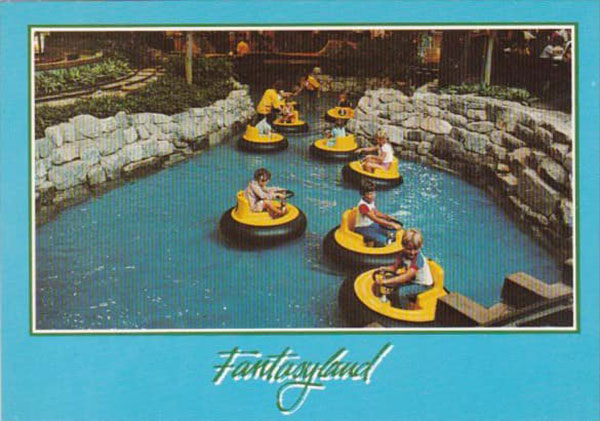
Wait, there’s West Edmonton Mall?!
I grew up in Ottawa in the 1970s, before global warming. We had a different name for these amazing indoor spaces without snow or ice in the long winters and with air conditioning in the heat waves. They’re known as shopping centres or centres d'achat. Everyone called them by their names: Shoppers City, St. Laurent, Bayshore, Rideau Centre.
The adults might have been aware of shopping mall entrepreneur Victor Gruen, but their model for indoor shopping came from the so-called centre of the universe, which was Montreal at the time. Before the Olympics or Expo 67 there was Place Ville Marie, a shopping complex that was half underground and connected to train stations, the new subway, hotels, office towers and convention centres. With this Canadian Futurama as our beacon, we in central and eastern Canada were stunned to discover in 1981 that Alberta was home to the world's largest indoor shopping centre.
When we first heard of West Edmonton Mall, we thought it was less of a shopping centre and more like an overreaching attempt at Disneyland. Typical English Canadian reaction.
— Ian Weniger
In rural Ontario, otherworldly excitement
Growing up in rural Ontario, malls presented a strange opposing reality to the everyday. I want to say when I was in my early teens it almost seemed exotic, which is a weird sentiment to have towards grey and brown hallways lined with the likes of the Lewiscraft craft shop, Sam the Record Man and Coles bookstore.
The real draw for me was the mall arcade. Back then, every mall had one, even if it was just a few machines tucked in a dark room at the back of a novelty goods store. As a young person with time to kill and a limited income, I remember stalking around and around the cabinets, weighing my few quarters against the promises of fun. The weird etiquette of adding your quarter to the line at the edge of the screen of others waiting to play to hold your place, and the subtle and overt threats you could get for daring to challenge and knock out someone playing a fighting game.
You never knew whether you were going to stumble into something new or strange or classic at the mall. Going into a new one, you always felt a little like an explorer.
— Jeff Bedggood
A 45 and a paperback for me, please
It was later in life that I would study planning and development patterns, the ways we build cities, and the ways the built environment influences the ways we interact. I didn’t know that as a teenager at Chicago Ridge Mall.
What I remember clearly are the weekend afternoons, the climate outside wiped away by the always mildly dry and 70-degree air. That I would always see someone I knew. That a Saturday afternoon would mean a full arcade, a full food court, and people seated all around the edge of the fountain.
Where I live now? There isn’t a mall, and the mall in (relatively) nearby Olympia, Washington, isn’t a place I really go. We don’t walk from store to store, on Main Street or at the mall — we drive now. I don’t know as many people, and most of us are much more scattered — I’m 2,000 miles from Chicago Ridge and those friends from before.
These spaces had their problems, their imperfections, but they held social and cultural value. Somewhere in that cool and dry air we had the community of commerce — and that connected us in ways that are as lost as yesterday’s Main Street.
I do miss my Sbarro and fountain drink between buying a 45 and a paperback. There was something earnestly commodified in those days.
— Evi Buell
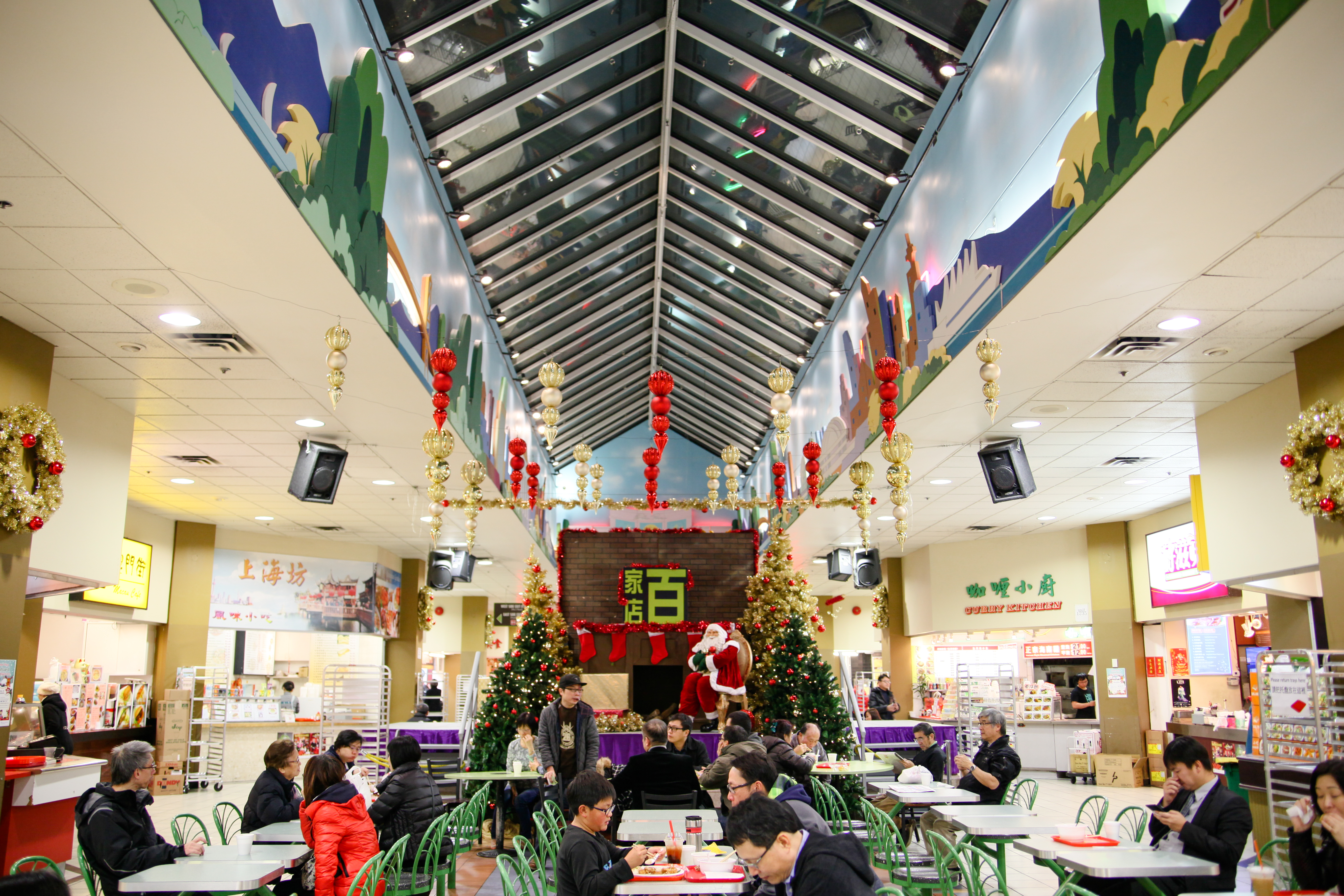
A haven that felt like home
As she pushed me in a stroller, my mother would take the 98 B-Line from our home in Vancouver to Richmond Centre. This was a frequent activity, so much so that mall employees thought that she was one of them. Walking around the mall now, I am reminded of the stores and installations that once stood in current spaces. The dining terrace used to be a typical 2000s-era ground-level food court. In front of what is now H&M was a small play place — a plastic Cathay Pacific plane — that children would climb all over.
Further along the No. 3 Road stretch of malls is Parker Place (百家店). Growing up as a second-generation immigrant, I now realize how much of a haven it was for me, as it was for my parents. Anytime I set foot inside, time seems to move so slowly. Every face I see is familiar to me, and every corridor provokes memories that have been ingrained into my mind. I attended the Chinese Cultural Centre that is located right across from the mall; it was routine to get the Hong Kong-style peanut butter and condensed milk toast from Tin Tin Kitchen (天天美食) before class.
Parker Place has a very special place in my heart. I feel at home every time I revisit.
— Kelly Yeung ![]()
Read more: Local Economy, Urban Planning


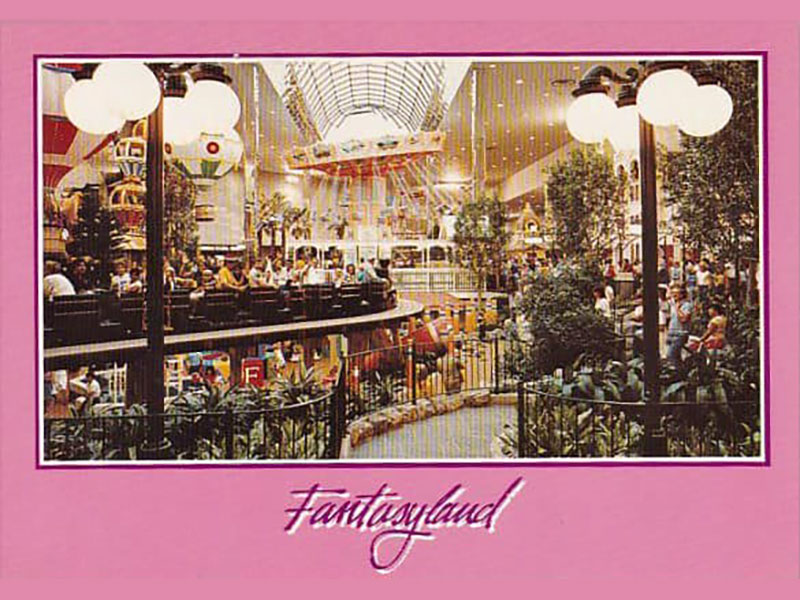



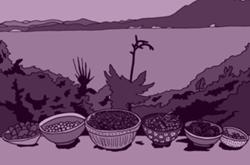

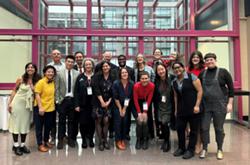

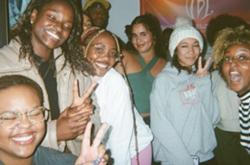



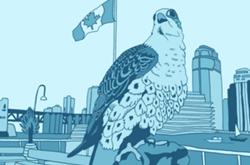
Tyee Commenting Guidelines
Comments that violate guidelines risk being deleted, and violations may result in a temporary or permanent user ban. Maintain the spirit of good conversation to stay in the discussion.
*Please note The Tyee is not a forum for spreading misinformation about COVID-19, denying its existence or minimizing its risk to public health.
Do:
Do not: